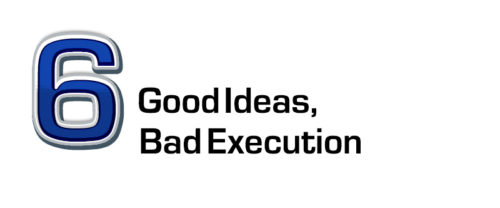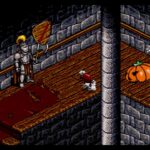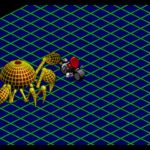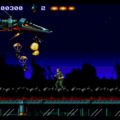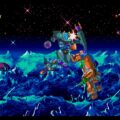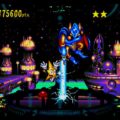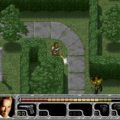Developer: Eurocom Publisher: Virgin Interactive Release: 11/95 Genre: Action
Cool Spot was one of the biggest unexpected surprises of the 16-bit era. By that point almost everyone understood most licensed games were trash and the cynical take was that it would be a quick cash in. However Virgin games put some of their top staff on the project and it was an excellent platformer among a sea of garbage. While I looked forward to Spot goes to Hollywood at first the change in viewpoint made me hesitant. My fears were not without merit as the game has problems. This remains one of my biggest disappointments toward the end of that generation.
I will say that the game’s premise is pretty clever. Spot has become entangled in a movie projector and must navigate his way through different film reels to find a way out. It gives an excuse for the game to feature various unconnected set pieces that spice up the gameplay. But due to the isometric controls, ill-advised platforming, and unbalanced difficulty the game does not do justice to its neat concept.
Spot Goes to Hollywood switches to an isometric view which brings many problems in terms of control. Rather than the delayed acceleration of the first game this one employs a run button which is simpler. The controls at the very least are responsive but as in most isometric games has its quirks. Spot can only move in eight directions. Walking in the four cardinal directions is simple if at times confusing. Trying to walk diagonally using the default Genesis D-pad is an exercise in frustration. Because of the perspective judging distances and aligning attacks or platforming is hard. Unfortunately these are skills that are called on heavily and almost never become intuitive no matter how much time you put in.
Although the viewpoint has shifted many aspects from the first game return. Every level has a set number of spots, usually between twenty and thirty. This is a far cry from the one hundred in the original. To unlock the exit you must collect at least 60% which sounds simple but is much harder. With fewer spots the game hides them a lot better. Rarely will you see them lying around in the environment. They can drop from enemies, serve as rewards for brief puzzles, or are hidden thoroughly in each map. There is no time limit this time around which is wise as the added pressure would have made the game intolerable. Searching each massive level for secrets and spots can be fun. It is everything else you have to deal with surrounding it that ruins the game.
I both like and hate the level design. Each level is a veritable playground with secrets around every nook and cranny. Because the necessary spots are so well hidden the game encourages exploration. When it works the game is fun. When it does not it is dreadful. After the initial pirate film levels the game begins to ramp up the platforming and it does not work. The viewpoint makes lining up jumps a nightmare and bottomless pits become commonplace. Parts of the environment obscure the critical path frequently making some of the more interesting levels a god damn mess. The occasional vehicle levels are ruined by unresponsive controls; the later Tron inspired Virtual World should have been a highlight. Instead it is one of the worst in my opinion.
Despite being a mascot platformer Spot goes to Hollywood is a difficult one. Standard enemies can take as many as ten hits to kill which is ridiculous. Spot can take a lot of damage but life restoring items are rare and barely restore any health. Normally you would avoid combat but in this case every enemy potentially has a spot you need. At least the boss battles are relatively easy; they have one easy to avoid attack and are basically damage sponges. Once platforming enters the picture the cheap deaths will pile up. The game uses passwords to save progress unlike its predecessor so it is at least easy to start over. The question is will you want to.
In Closing
Spot Goes to Hollywood had potential. The level design is more interesting and varied and you are not going through the game twice. The production values are high and are fitting for a late generation title. But its control and design issues let it down. I am sure there are those that will take its flaws in stride and find it fun. But in my opinion you have to overlook far too much to find its good points. This was a valiant attempt at something different but is not worth owning.
